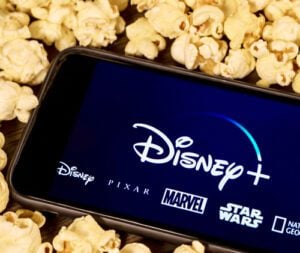TV industry vets convened at the National Association of Broadcasters (NAB) show in New York City last week to discuss the streaming industry’s maturation, and I was there for it.
Traditional media companies that have dipped a toe in streaming – so, just about all of them – now realize how challenging it is from a cost perspective to operate and maintain a streaming business, said Chris Defendis, a media and business advisor speaking at NAB. Before striking out on his own this month after a yearlong stint at WWE, Defendis was previously VP of partner management at Warner Bros. Discovery, where he worked for 20 years (back when HBO was still a standalone thing).
Streaming services are juggling rising competition and content production costs while trying to grow subscriber growth and profitability from ads. According to Defendis, not all of them will survive, at least not in their current form.
Without consolidation, streamers won’t be in a position to generate enough profit, he said. But consolidation has started happening, as media companies divest the lower-performing parts of their businesses. (Exhibit A: Disney trying to sell ABC and its local stations.)
But, perhaps more importantly, media companies are also revisiting TV bundles, a mainstay of linear distribution since the golden age of cable and satellite.
Better in bulk
Programmers are turning to bundling to cut down on operating costs and attract bigger ad budgets by making it easier for agencies to buy more inventory at one time. Bundles also help keep subscribers from leaving for competing services by giving them access to more content at a competitive price.
Case in point: Paramount recently folding Showtime into Paramount+ and Disney working to combine Disney+ and Hulu into a single app by the end of the year.
But this new wave of streaming bundles is also making its way into legacy linear, which is both a blessing and a curse for TV publishers.
Having realized how important streaming is to consumers, cable and satellite companies have started to strong-arm publishers into offering streaming content as part of a bundle in exchange for pay TV distribution.
One viral example is the recent carriage dispute between Disney and Charter’s Spectrum.
After failing to reach a deal over carriage fees this summer, Disney temporarily removed its channels from Spectrum, including ESPN. Spectrum said it would only agree to pay higher fees if Disney would make the ad-supported tiers of both Disney+ and ESPN+ available for Charter’s most popular cable package – and Disney conceded. The two companies reached an agreement in September.
This was a big deal (ha, get it?) because it sets a precedent for other programming distributors to make similar demands. It’ll be interesting to see how the negotiations in the ongoing carriage dispute between Dish and Hearst Television play out. (The same week Disney and Charter reached an agreement, Hearst blacked out its channels on Dish after the two failed to reach a carriage agreement renewal.)
Until now, programmers have been demanding higher carriage rates for linear inventory to help them manage the operating costs for standalone streaming services. But even if programmers end up giving ground, putting streaming content on pay TV – which means wider distribution – will likely boost both subscriber retention and ad revenue.
Guess the bundle really is back.
In the TV and media landscape, Defendis said, “what’s old is new again.”
Are you enjoying this newsletter? Let me know what you think. Hit me up at [email protected].



















